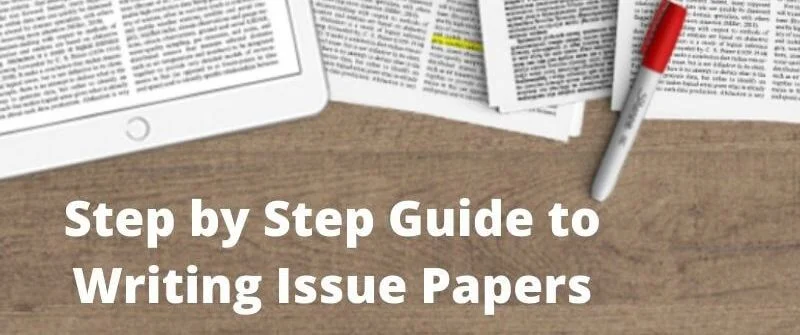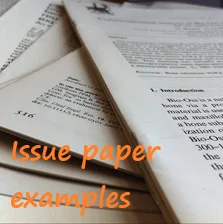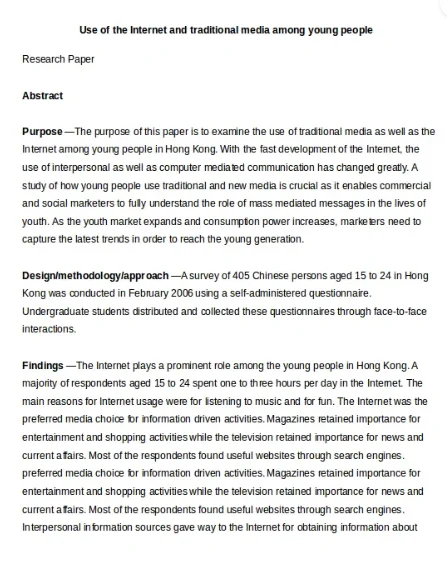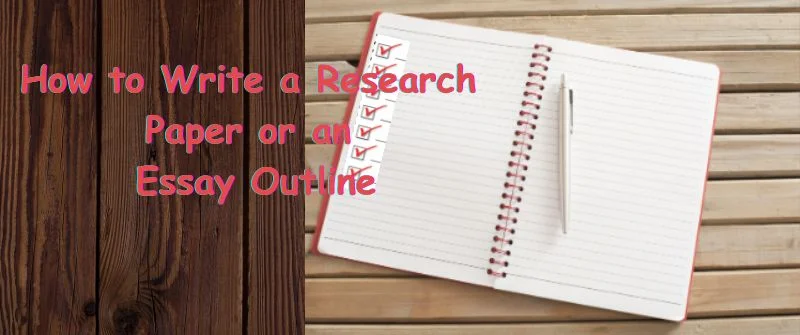How to Write an Issue Paper and Analysis: A Stepwise Guide

An issue paper is a brief essay written to expound on a particular topic. An issue paper is meant to convince an individual, a division or a company, or a law-making body to take specific actions, including developing policies and putting laws in place in a business or company.
In our essay writing experience, our tutors note that most colleges use issue papers to assess whether students have understood a certain societal or national issue. Click on the right button to consult one of these expert graduate writers if you need personalized help.
Writing an issue paper requires you to summarize what you have studied about an issue or a challenge you have encountered in your field. You then take a position and argue in a way that will lead to an action or a relevant policy being put in place.
This guide will examine how to write an issue paper under the following titles:
- How to write an issue paper (steps)
- Key areas of concern in an issue paper
- The format of an issue paper
Leu us Write your Papers! No Plagiarism
Get that A on your next essay assignment without the hassles. Any topic or subject. 100% Plagiarism-Free Essays.
A Step-by-Step Guide how to Write an Issue Paper

You have to know the issue you are writing about. This guide is shorter than our complete guide to writing good essays that we did in a rather comprehensive manner. Check it out for deeper details.
Before reading the steps, know the topic you are exploring.
This issue arises from the topic, so you must have familiarity with the issue to avoid a scenario in which you will only discuss the hypothetical bit.
Step 1. Choose an Appropriate Title
Choose a title that is interesting as long as it has strong points of argument. An interesting title to you should have strong points of argument that provide you with a proper platform to write your issue paper.
You will have feeble arguments if you choose an interesting one without proper evidence.
When you choose a topic that is your favorite, the emotional bit in you might make you reason illogically.
Therefore, choose a topic that will allow you to think objectively with neutrality and without bias.
Step 2. Make the Outline of your Issue
This includes your thesis and short notes or preparations for your arguments. This is what provides the plan of the paper you are to write. The outline is planned in the manner discussed in step 3 below.
Step 3. Specify the Topic
Choose a topic that has not been explored and brainstorm on what approach the topic can take. Set up your ideas.

Step 4. Write up the Thesis Statement
You can still refer to your tutor concerning the essay and how its theoretical framework should appear.
Note down your thoughts as they cross your mind as you also reflect on the topic. Think over the topic for some hours or rather sleep over it.
The insights that will cross your mind will be important and worth noting.
Read and research more on the subject by sourcing books, articles, journals, and literary works which appear key and relevant to your work. As you read, take notes on the key points.
Doing this gives you a second draft of the plan since you are more enlightened and knowledgeable. This is what gives you the structure of the issue paper. It has the following:
The introduction-This is a brief paragraph that has a hook ta draws the reader’s attention and introduces us to the topic.
Theoretical framework-These are the sources and the ideas you are arguing for.
The argument-Here you discuss three or four arguments, each appearing in its paragraph.
The conclusion-This is a brief summary that encompasses the entire essay.
References -These are drawn from the citations and various sources used in your research to answer the issue paper.
Step 5. Write the Draft
You will provide an abstract of your work. Give an accurate description of the issue at hand, the reasons that caused the controversy, and the actions you would like to be taken by the relevant authorities.
Step 6. Revise your Draft Paper
Go through your paper to:
- Correct any mistakes that appear on the paper as you pay attention to sections where you have made assumptions
- Have you written something the reader can easily understand?
- Have you captured everything?
- What have you excessively explained?
You may give your work to someone else to get their responses. This is key since the person might have a different opinion from yours.
Step 7. Write the Summary

Write a summary that is convincing and moderate in tone and voice. The summary captures the key areas in your paper and the touching points.
The summary can be done with reference to what was introduced in the introduction paragraph.
That is why an introduction paragraph to an argument is very important since it sets the tone for the whole paper, and the final summary, commonly called the conclusion.
Use the correct form of referencing to support your evidence. Some referencing styles include MLA, American Psychological Association (APA), and Chicago.
Step 8. Insert the References
Research on an issue paper requires material from other sources such as articles and reports, books, periodicals, and brochures.
You can have in-text citations or a bibliography at the end, eventually forming the reference list.
This not only allows you to give your readers complete information but also gives credit to other writers. Apart from that, you prove your ability to research carefully.
Readers can verify the truth and accuracy of your paper through these references and citations.
Information from other sources may be paraphrased, summarized, or directly quoted.
- Direct quoting is done sparingly.
- Paraphrasing is done when conveying ideas in your own words differently from the original source.
- Quote only when the material is unique and challenging to reproduce.
- Quoted materials make your research efforts credible and believable.
How to Format an Issue Paper
In summary, the issue paper should therefore take the following format:
The title
This should be open and debatable; one that has not been well-researched would be better.
The Introduction 2-3 Paragraphs

This can take the form of:
- Something interesting such as a story, a quote, or a question
- This bit answers the ‘why’ question
- A short history of the problem is outlined.
Contains a thesis of 2-3 sentences.
The Body Part one 4-6 Paragraphs
This explains or provides the extent of the problem and how bad it is.
This part shows:
- What has happened in relation to the paper?
- Why we should be concerned.
- Who is affected/how are people affected
All these are done through examples, stories, and facts.
The Body Part of two 3-4 Paragraphs
- This part explains the cause or effect of the problem
For example, it might begin with: Because of this problem…
- It also explains the consequences of the problem.
For example: if we don’t act fast and solve this problem, this will happen…
Go through the Recommended Literature
As you read and research what will be in your paper, write all the remarks, thoughts, and relevant ideas that may pop up in your mind.
Take note of passages that relate to your title, various meanings of words and concepts, plus theories. Moreover, you can also take note of theories that are relevant to what your issue paper will be all about.
The body part Three 1-3 Paragraphs
This section contains the probable solutions to the discussed issues. It states:
- What will work
- What will not work?
- The possible opposition it will receive.
The conclusion
It restates the thesis and relates the work to the introduction. Just like writing a survey paper, this step involves the summation and presentation of key points of the entire paper.
If the provided plans, steps, and guidelines are followed, you will not only be able to write a good issue paper but also convince your readers and audience on why the issue stated should be looked into.
Go through the Recommended Literature
As you read and research what will be in your paper, write all the remarks, thoughts, and relevant ideas that may pop up in your mind.
Take note of passages that relate to your title, various meanings of words and concepts, plus theories. Moreover, you can also take note of theories that are relevant to what your issue paper will be all about.
The conclusion
The conclusion brings closure for the reader regarding the paper by bringing thoughts together in a particular manner.
In a way, it should answer the following:
- Did it achieve what it set out to?
- Were the questions asked in the introduction addressed in the body?
- Were answers to these questions found?
The conclusion, therefore, allows the writer to briefly state some of the key points in the body and arrange them in a summarized form.
You can read more about a different type of essay – the guide to writing opinion essays, which will expound more on something different. You can also read about writing theory of knowledge essays for a wider understanding.
Jessica Kasen is experienced in academic writing and academic assistance. She is well versed in academia and has a master’s degree in education. Kasen consults with us in helping students improve their grades. She also oversights the quality of work done by our writers.




